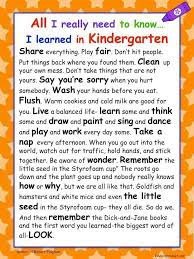Pop Quiz: Grit by Grumpy Old Teacher
And you thought Grumpy Old Teacher (GOT) was making this up.
What is grit?
An obscure, newspaper-style magazine that advertized for carriers in comic books.
A Southern food spelled in the plural.
A small particle of stone or sand.
All of the above.
Grit, as a human character trait, is not hard to understand although we usually call it perseverance.
Grit is the ability to throw off discouragement when one has failed and to try again.
Grit is the belief that one can succeed if one only sticks to a task, a goal, or an objective until one has achieved it.
Those who have grit will keep at it whereas those who do not will give up.
The ability to persevere until finding success, a/k/a grit, is one of those common-sense concepts that everyone gets until we have to mess it up, mostly because perseverance like all character traits is not taught. It can be learned, but it cannot be taught.
Grit goes hand-in-hand with another trait, the growth mindset. Oh, how excited everyone was when Carol Dweck first published her book. The problem came when district administrators caught on to the fad, went to seminars to catch the lecture and purchase the resources, and returned home to mandate that classroom teachers would now teach children how to have a growth mindset, including scripted lessons and assessments.
GOT understands the power of having a growth mindset as well as perseverance, but the problem is that these things cannot be taught. That needs repeating and in all caps (yes, GOT is shouting): THEY CANNOT BE TAUGHT!
Like all social-emotional learning, it must be experienced and absorbed. Formal lessons with stupid quizzes at the end … because anything worth doing in a classroom must produce data at the end for endless handwringing of local and district administrators … is stupid.
The real Mason-Dixon line: That looks yummy vs. you people really eat this?!
Good teachers know this. Years ago, GOT noted how the freshmen in his math classes would give up and not try again if they did not understand something or got it wrong.
They did not persevere. It was not a character trait, fixed or acquired, that they were lacking.
They hadn’t yet caught on that GOT is a teacher of second chances, even a third or a fourth, if only a student will keep trying.
The key to grit or perseverance is that it cannot be taught; it is learned through experience, which means that a wise teacher creates a learning environment that encourages children to keep trying. This is true for all levels, pre-K to college level and beyond. If children are in an environment where they are encouraged to risk failure because failure can be a great teacher, they can take that risk because there is always another chance to try again, and eventually the sweet, sweet taste of success will be in their mouths.
Looks rather sharp. How did this become the symbol of trying again?
That is grit. That’s it. No fancy academic lecture, book, or Ted Talk is needed.
GOT has no athletic talent. None at all. So he gave up, even as a child, at playing any sports although as an adult, he spent many futile years trying golf. GOT still was awful.
GOT supposes you would say he lacked grit. All that stood between him and a high school letter jacket and an athletic scholarship to college was grit. You ain’t got it, kid, now get outta here.
Or you could say that maybe GOT realized that athletics wasn’t his thing and turned his time and attention to more fruitful endeavors that brought him accomplishment and satisfaction.
But when it comes to grit and school, we’re not talking about sticking to a line of inquiry until a Nobel prize is awarded. We’re talking about the basic knowledge that every human being can gain and master.
There came a time when GOT was visiting his sister and her family. His nephew was out back shooting baskets and asked GOT to come play. He demurred, saying he didn’t participate in sports. In the ensuing conversation, his nephew, about 10 years old at the time, told him that he could be good at it if he would practice two or three hours a day like his nephew did.
His nephew was right, of course. If GOT practiced shooting baskets three hours a day, he could achieve some level of competency. But the environment would have to be right to encourage that and GOT was now an adult with a job and professional obligations. That kind of time wasn’t possible. The environment was not there.
That’s the wonderful aspect of childhood. By law, our society has made the choice to ban child labor until they have grown old enough. Even as teenagers, we limit their hours until they are adults to give them the time they need to learn and develop. By limiting work hours, we create the environment whereby that can take place.
Once a person enters adulthood, they will never have that chance again until they retire.
Once upon a time, children acquired social-emotional learning naturally, not formally, and someone finally wrote it down:
The book is thirty years old. In those days, before kindergarten became the new 7th grade, nine-year-old children were expected to master calculus, and newborns needed to enter the world being able to sightread new words, people read this book by Robert Fulghum and said he nailed it.




